#Eugène Emmanuel
Text

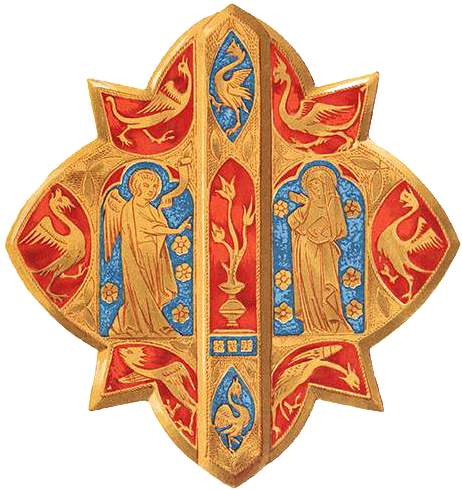
Illustrations by Viollet-le-Duc, Eugène Emmanuel
#Viollet-le-Duc#Eugène Emmanuel#fastener#medieval#13th century#fashion#historical fashion#historical clothing#finery
5 notes
·
View notes
Text
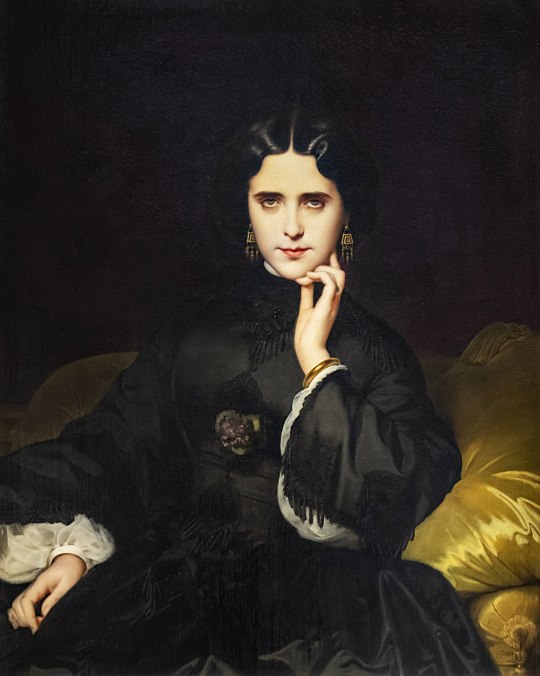
Eugène Emmanuel Amaury Duval - Madame de Loynes (1862)
When Amaury-Duval painted her portrait, the Comtesse de Loynes was still just Jeanne de Tourbey. The daughter of working-class parents from Reims, she took advantage of her beauty and wit to conquer Paris and, through her lover Prince Napoleon, to open one of the most brilliant Second Empire literary salons.
This was keenly attended by writers and critics such as Charles Sainte-Beuve, Hippolyte Taine, Alexandre Dumas, and also Gustave Flaubert, who admired her "panther-like graces and devilish wit".
To do justice to such charms, Amaury-Duval called upon all the expertise he'd gleaned from portraits by his master Ingres; set in a jewel case of buttercup silk cushions, the brilliant black taffeta gown —extended by the deep purple drape and the jet-black hair— lend the downy face the opaline brightness of moonlight.
The hypnotic gaze from the shaded gray eyes, framed by earrings in the neo-Greek style, celebrates the gift of this "admirable listener".
But, comparable to the gaze of the Comtesse de Castiglione in her photographic self-portraits, this stage effect also introduces the intoxicating allure of the female sphinx, the enigmatic femme fatale, which enjoyed great success with the symbolists at the end of the century.
The critic Emile Cantrel observed that, "There is a world and a half-world in those eyes". (source)
134 notes
·
View notes
Photo





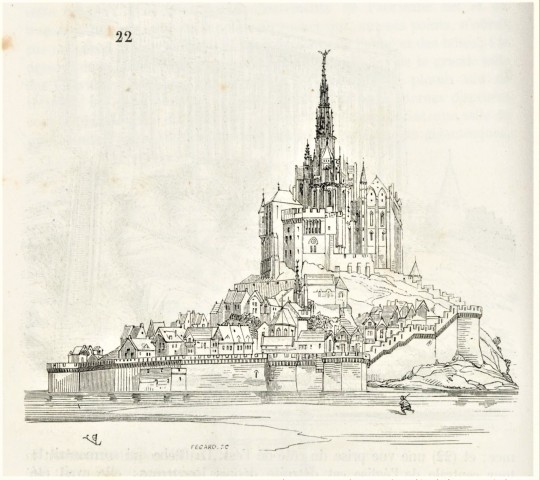



Decorative Sunday
A few months ago we shared plates from the Industrial and Applied Arts publication L’Art Pour Tous. That magazine has two direct connections to the subject of today’s post, the influential Dictionnaire Raisonné de L’architecture Française. The magazine’s director, Claude Sauvegeot, was a student of the Dictionaire’s author, architect and medievalist Eugène-Emmanuel Viollet-le-Duc, and was published by A. Morel, who took up editorship of the Dictionnaire after the death of the original publisher, Balthazar Bance.

The ten volumes that comprise the Viollet-le-Duc’s Dictionnaire were published in Paris from 1854 through 1868, with Bance publishing the first six volumes. The Dictionary’s entries are illustrated by hundreds of wood engravings. Bance’s son Albert, still a minor at the time of his father’s death, was slated to succeeded him at the helm of the multi-generational Bance publishing business. However, Balthazar’s leadership of the Bance firm had been been marred by financial hardships, and a portion of Bance’s commercial contracts were actioned off, including the rights to the Dictionnaire.
Those publishing rights were snapped up by August-Jean Morel. Morel went on to publish the last four volumes, as well as establish an important relationship with Viollet-le-Duc. Founded by Morel in the late 1840′s, Veuve A. Morel et Cie. and its associated bookshop specialized in finely produced books on art, architecture, and design. The firm remained operational for decades after Morel’s death in 1869, under the management of Morel’s widow and with active involvement from Viollet-le-Duc himself.
You can find more Decorative Sunday posts here.
-Olivia, Special Collections Graduate Intern
#Decorative Sunday#Dictionnaire Raisonné de L’architecture Française#Eugène-Emmanuel Viollet-le-Duc#Viollet-le-Duc#August Morel#A. Morel#Veuve A. Morel et Cie.#Bance#Balthazar Bance#architecture#dictionary of french architecture#decorative plates#wood engravings#olivia
49 notes
·
View notes
Text


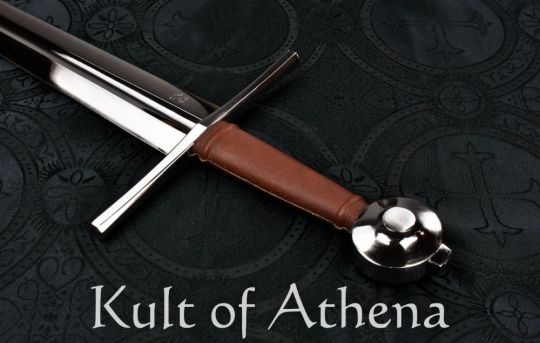
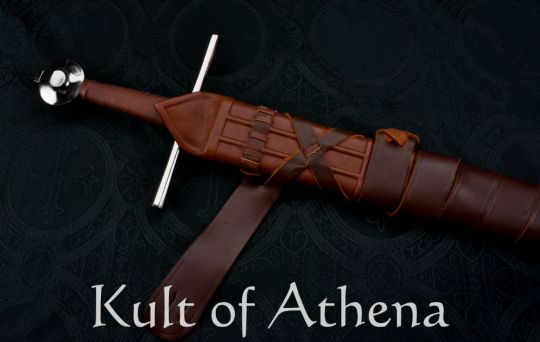
Darksword – The Duke Sword with Integrated Sword Belt
The Duke sword is inspired by an illustration in Eugène Emmanuel Viollet-le-Duc medieval encyclopedia, a masterwork of exposition and illustration. The blade of the Duke is forged from mirror-polished 5160 high carbon steel which is differentially tempered to possess a hardened edge of 60 HRc steel and a flexing, shock absorbing core of 48-50 HRc hardness. The guard and pommel are of steel and the wooden grip is bound in leather. The blade is securely anchored into the hilt with a robust peen on the pommel. Included with the sword is a wood-core scabbard which is tightly bound in leather and completed with an integrated sword belt and a protective steel chape.
If you ask modern day sword collectors who the most famous and influential scholars of the medieval sword were, the typical answer you will get is Ewart Oakeshott (1916-2002). And it’s true – Oakeshott literally wrote the book on medieval sword types, and a whole system of classification (The Oakeshott Typology) is named after him. More advanced collectors may recognize the names Dr. Jan Peterson (1887-1967), who created a typology for classifying Viking swords, or Sir Robert Eric Mortimer Wheeler (1890-1976), who refined Peterson’s typology. Predating any of these scholars, however, is a man whose writing on medieval arms, armor, and architecture dwarfs many later historians’ bibliographies – though he is largely unrecognized by the modern sword collecting world.
Eugène Emmanuel Viollet-le-Duc was born in 1814 in Paris, France. He was an architect by trade, a brilliant one by all accounts, and an inspired artist and illustrator. While the architectural world knows Viollet-le-Duc as an architect, restorer of historical buildings and monuments (including considerable work on Notre-Dame Cathedral and many other famous landmarks), and as the first true theorist of modern architecture, he also wrote and illustrated some of the largest volumes in existence on the medieval sword.
The volumes Viollet-le-Duc wrote are breathtaking in their scope and depth. His extensive writings cover not only descriptions of different medieval swords and armor but tracks and explains their evolution throughout history, and his stunning illustrations compliment his writing expertly. Unfortunately, as his works were not commonly translated into English, the largely-anglophone sword collecting population remains ignorant of these incredible volumes and Viollet-le-Duc’s influence on medieval scholarship. Some translations exist, but copies are notoriously hard to find and prohibitively expensive. In the English-speaking world, many of these works and completely unknown, and the incredible scholarship they contain can only be found by efforts of French-speaking individuals – such as us here at Darksword Armory.
The Duke sword is inspired by an illustration in Eugène Emmanuel Viollet-le-Duc medieval encyclopedia, a masterwork of exposition and illustration. A classic knightly sword, the Duke is designed to resemble the cruciform arming sword so often found in medieval art. The straight guard is expertly sculpted and subtle in its smooth lines. A double-edged, single-fullered blade departs slightly from Viollet-le-Duc’s illustration in that it has a less severe taper and termination. The pommel may appear to be a standard wheel-style pommel with peen block, but has in fact been made slightly oversized to counterbalance the blade. This brings the point-of-balance closer to the guard, resulting in a sword that is startlingly lively in the hand and that flows effortlessly from strike to guard. The Duke is one of our best attempts at recreating the knight’s arming sword, and we hope the great Eugène Emmanuel Viollet-le-Duc would be proud of us.
#Kult of Athena#KultOfAthena#New Item Wednesday#Darksword Armory#The Duke Sword#The Duke Sword with Integrated Sword Belt#sword#swords#weapon#weapons#blade#blades#Medieval Swords#Medieval Weapons#European Swords#European Weapons#Eugène Emmanuel Viollet-le-Duc medieval encyclopedia#Eugène Emmanuel Viollet-le-Duc#5160 High Carbon Steel#Battle Ready#new item#new items
4 notes
·
View notes
Photo

Jacques de Molay, Grand Master of the Knights Templar by Eugène Emmanuel Amaury-Duval
Bernard [of Clairvaux] observed, “It is therefore something worthy of admiration and exceedingly singular to see how they are as meek as lambs and, at the same time, more ferocious than lions, so that I almost doubt whether it would be better to refer them in both ways, in so far as they lack neither the meekness of the monk nor the courage of the warrior.” (p.51)
…
For the Templars, audacity, the prime virtue of the knight in The Song of Roland, must be balanced by wisdom—understood not only as sagacity in making the best use of one’s resources but also as moderation and harmony among fellow warriors. Belonging to an elite military and social group came with the duty to defend its moral image. (p.67)
— Barbara Frale, The Templars: the Secret History Revealed
2 notes
·
View notes
Text
Friends, enemies, comrades, Jacobins, Monarchist, Bonapartists, gather round. We have an important announcement:
The continent is beset with war. A tenacious general from Corsica has ignited conflict from Madrid to Moscow and made ancient dynasties tremble. Depending on your particular political leanings, this is either the triumph of a great man out of the chaos of The Terror, a betrayal of the values of the French Revolution, or the rule of the greatest upstart tyrant since Caesar.
But, our grand tournament is here to ask the most important question: Now that the flower of European nobility is arrayed on the battlefield in the sexiest uniforms that European history has yet produced (or indeed, may ever produce), who is the most fuckable?
The bracket is here: full bracket and just quadrant I
Want to nominate someone from the Western Hemisphere who was involved in the ever so sexy dismantling of the Spanish empire? (or the Portuguese or French American colonies as well) You can do it here
The People have created this list of nominees:
France:
Jean Lannes
Josephine de Beauharnais
Thérésa Tallien
Jean-Andoche Junot
Joseph Fouché
Charles Maurice de Talleyrand
Joachim Murat
Michel Ney
Jean-Baptiste Bernadotte (Charles XIV of Sweden)
Louis-Francois Lejeune
Pierre Jacques Étienne Cambrinne
Napoleon I
Marshal Louis-Gabriel Suchet
Jacques de Trobriand
Jean de dieu soult.
François-Étienne-Christophe Kellermann
17.Louis Davout
Pauline Bonaparte, Duchess of Guastalla
Eugène de Beauharnais
Jean-Baptiste Bessières
Antoine-Jean Gros
Jérôme Bonaparte
Andrea Masséna
Antoine Charles Louis de Lasalle
Germaine de Staël
Thomas-Alexandre Dumas
René de Traviere (The Purple Mask)
Claude Victor Perrin
Laurent de Gouvion Saint-Cyr
François Joseph Lefebvre
Major Andre Cotard (Hornblower Series)
Edouard Mortier
Hippolyte Charles
Nicolas Charles Oudinot
Emmanuel de Grouchy
Pierre-Charles Villeneuve
Géraud Duroc
Georges Pontmercy (Les Mis)
Auguste Frédéric Louis Viesse de Marmont
Juliette Récamier
Bon-Adrien Jeannot de Moncey
Louis-Alexandre Berthier
Étienne Jacques-Joseph-Alexandre Macdonald
Jean-Mathieu-Philibert Sérurier
Catherine Dominique de Pérignon
Guillaume Marie-Anne Brune
Jean-Baptiste Jourdan
Charles-Pierre Augereau
Auguste François-Marie de Colbert-Chabanais
England:
Richard Sharpe (The Sharpe Series)
Tom Pullings (Master and Commander)
Arthur Wellesley, 1st Duke of Wellington
Jonathan Strange (Jonathan Strange & Mr. Norrell)
Captain Jack Aubrey (Aubrey/Maturin books)
Horatio Hornblower (the Hornblower Books)
William Laurence (The Temeraire Series)
Henry Paget, 1st Marquess of Anglesey
Beau Brummell
Emma, Lady Hamilton
Benjamin Bathurst
Horatio Nelson
Admiral Edward Pellew
Sir Philip Bowes Vere Broke
Sidney Smith
Percy Smythe, 6th Viscount Strangford
George IV
Capt. Anthony Trumbull (The Pride and the Passion)
Barbara Childe (An Infamous Army)
Doctor Maturin (Aubrey/Maturin books)
William Pitt the Younger
Robert Stewart, 2nd Marquess of Londonderry (Lord Castlereagh)
George Canning
Scotland:
Thomas Cochrane
Colquhoun Grant
Ireland:
Arthur O'Connor
Thomas Russell
Robert Emmet
Austria:
Klemens von Metternich
Friedrich Bianchi, Duke of Casalanza
Franz I/II
Archduke Karl
Marie Louise
Franz Grillparzer
Wilhelmine von Biron
Poland:
Wincenty Krasiński
Józef Antoni Poniatowski
Józef Zajączek
Maria Walewska
Władysław Franciszek Jabłonowski
Adam Jerzy Czartoryski
Antoni Amilkar Kosiński
Zofia Czartoryska-Zamoyska
Stanislaw Kurcyusz
Russia:
Alexander I Pavlovich
Alexander Andreevich Durov
Prince Andrei (War and Peace)
Pyotr Bagration
Mikhail Miloradovich
Levin August von Bennigsen
Pavel Stroganov
Empress Elizabeth Alexeievna
Karl Wilhelm von Toll
Dmitri Kuruta
Alexander Alexeevich Tuchkov
Barclay de Tolly
Fyodor Grigorevich Gogel
Ekaterina Pavlovna Bagration
Ippolit Kuragin (War and Peace)
Prussia:
Louise von Mecklenburg-Strelitz
Gebard von Blücher
Carl von Clausewitz
Frederick William III
Gerhard von Scharnhorst
Louis Ferdinand of Prussia
Friederike of Mecklenburg-Strelitz
Alexander von Humboldt
Dorothea von Biron
The Netherlands:
Ida St Elme
Wiliam, Prince of Orange
The Papal States:
Pius VII
Portugal:
João Severiano Maciel da Costa
Spain:
Juan Martín Díez
José de Palafox
Inês Bilbatua (Goya's Ghosts)
Haiti:
Alexandre Pétion
Sardinia:
Vittorio Emanuele I
Lombardy:
Alessandro Manzoni
Denmark:
Frederik VI
Sweden:
Gustav IV Adolph
46 notes
·
View notes
Photo
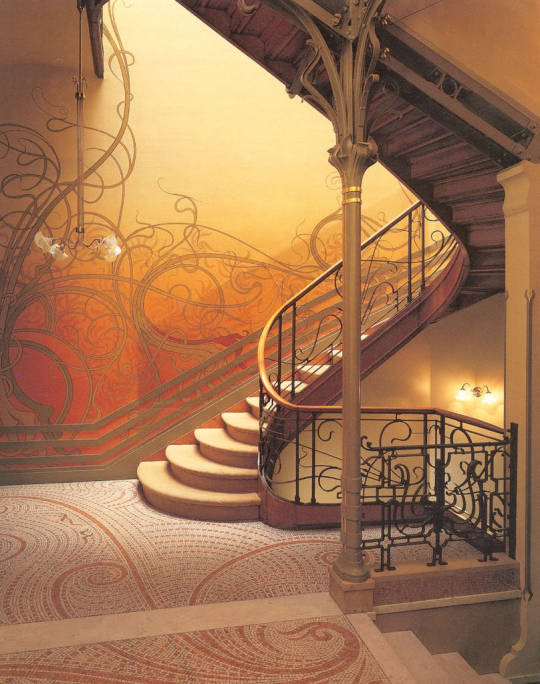
Art Nouveau
Art Nouveau (/ˌɑːrt nuːˈvoʊ, ˌɑːr/; French: [aʁ nuvo]) is an international style of art, architecture, and applied art, especially the decorative arts, known in different languages by different names: Jugendstil in German, Stile Liberty in Italian, Modernisme català in Catalan, etc. In English it is also known as the Modern Style. The style was most popular between 1890 and 1910 during the Belle Époque period that ended with the start of World War I in 1914.[1] It was a reaction against the academic art, eclecticism and historicism of 19th century architecture and decoration. It was often inspired by natural forms such as the sinuous curves of plants and flowers.[2] Other characteristics of Art Nouveau were a sense of dynamism and movement, often given by asymmetry or whiplash lines, and the use of modern materials, particularly iron, glass, ceramics and later concrete, to create unusual forms and larger open spaces.[3]
One major objective of Art Nouveau was to break down the traditional distinction between fine arts (especially painting and sculpture) and applied arts. It was most widely used in interior design, graphic arts, furniture, glass art, textiles, ceramics, jewellery and metal work. The style responded to leading 19-century theoreticians, such as French architect Eugène-Emmanuel Viollet-le-Duc (1814–1879) and British art critic John Ruskin (1819–1900). In Britain, it was influenced by William Morris and the Arts and Crafts movement. German architects and designers sought a spiritually uplifting Gesamtkunstwerk ("total work of art") that would unify the architecture, furnishings, and art in the interior in a common style, to uplift and inspire the residents.[3]
24 notes
·
View notes
Text
Introduction/Who am I?
Okay, so since I’m back on here again in the ongoing exodus, I thought I’d better do an introductory post for anyone who wants to follow as well as refresh old friends and followers. Open to new friendships so feel free to send me asks, reply, or whatever if you want to talk.
Francesca (Fran, Frankie for short)
Englishwoman
Lesbian, f4f
Cat person (see previous bullet)
I enjoy writing although I’m aware I’ll probably never be published so it’s mostly just something I do for my own personal catharsis and expression.
Night owl
Haute couture enjoyer
Learning French (c. B1, B2 reading level), want to learn European Portuguese, Spanish, Latin, Dutch, interested in language acquisition more broadly
I’ve always been a voracious reader so some favourite authors, poets and essayists: Sappho, Gustave Flaubert, Charles Baudelaire, Arthur Rimbaud, Théophile Gautier, Gérard de Nerval, Marcel Proust, Alain-Fournier, Jorge Luis Borges, Camilo Castelo Branco, Yukio Mishima, Jean Genet, Anaïs Nin, Novalis, Simone Weil, Jacques Lacan, Plato, James Joyce, Emily Brontë, Jane Austen, Oscar Wilde, George Orwell, Vladimir Nabokov, John Donne, F. Scott Fitzgerald, Emily Dickinson, Fyodor Dostoevsky. My favourite novel (and maybe favourite work of art full stop) is Madame Bovary.
Cinema is my other great passion and one I’ve spent the last few years particularly delving into - some favourite directors/auteurs: Carl Dreyer, Michael Powell (& Emeric Pressburger), Manoel de Oliveira, Alfred Hitchcock, Howard Hawks, Yasujiro Ozu, Francis Ford Coppola, Brian de Palma, Raoul Ruiz, Douglas Sirk, Josef von Sternberg, Ernst Lubitsch, Erich von Stroheim, F.W. Murnau, Fritz Lang, Claude Chabrol, Éric Rohmer, Jean Renoir, Max Ophüls, Eugène Green, Rainer Werner Fassbinder, Luis Buñuel, Pedro Costa, Luchino Visconti, Val Lewton, Dario Argento, Ingmar Bergman, Nagisa Oshima, Wojciech Has. My favourite film is A Matter of Life and Death (1946).
My favourite actresses: Isabelle Huppert (in love with her), Catherine Deneuve, Sophia Loren, Joan Crawford, Barbara Stanwyck, Susan Hayward, Marlene Dietrich, Isabelle Adjani, Sissy Spacek, Vivien Leigh, Penélope Cruz, Fanny Ardant, Monica Bellucci, Emmanuelle Béart, Sandrine Bonnaire
Favourite music: Erik Satie, Claude Debussy, Serge Gainsbourg, Sergio Mendes, Miles Davis, John Coltrane, Charles Mingus, Herbie Hancock, Ella Fitzgerald, Billie Holiday, Dusty Springfield, Nina Simone, Carpenters, Stevie Wonder, Prince, Kate Bush, Cocteau Twins, Björk, Talking Heads, The Cure, Boards of Canada, Joy Division, New Order, The Velvet Underground, Massive Attack, Portishead, Manic Street Preachers
Also enjoy art/painting, aesthetics, fashion, memes, food and (maybe too much) drink. Lots more that I can’t think of at the moment so maybe a sequel in the future when I feel like being inward-looking again?
#introduction#reference#intro post#language learning#cinema#literature#art#francescaderochefort#about me#language acquisition
8 notes
·
View notes
Photo
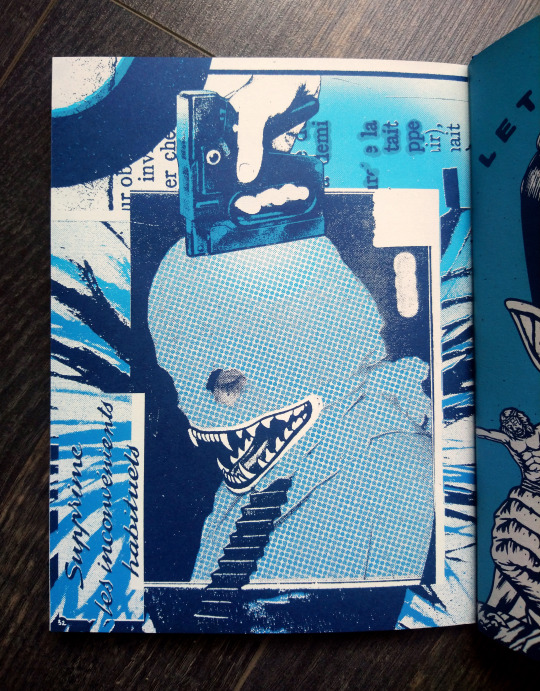
"𝐈𝐍𝐃𝐈𝐆𝐎 𝐋𝐔𝐗𝐄"
Ma contribution au artzine sérigraphié "𝐈𝐍𝐃𝐈𝐆𝐎 𝐋𝐔𝐗𝐄" édité par EpOx et BoTOx .
Dispo ici: https://epoxetbotox.com/shop/livres/collection-spectrom/indigo-luxe-collectif6/?fbclid=IwAR2c_iobohnbxF1yGh74W8LUjarEUWTW-FvO_9Jgmug4uf3Om8d-U-uQwOU
36 pages avec: Audrey Faury (FR) – Alice Assouline (FR) – Aude Carbone (FR) – Cha Kinon (BE/FR) – Cléo Duplan (FR) – Die Teufelhand (FR) – Emmanuelle Gailliez (FR) – Emre Orhun (TR/FR) – Eugène PWCCA (FR) – Faustine Jacquot (FR) – Flore Kunst (FR) – Gianluca ‘Tenia’ Gambino (IT) – Guillaume Soulatges (FR) – Hugo Charpentier (FR) – JessX (FR) – Jokoko (FR) – Luna Seals (BE) – Maïc Baxane (FR) – Maniak (FR) – Manon Bara (BE) – Margaux Bigou (FR) – Mathieu Jiro (FR) – MaxiCat (FR) – Mimieux (FR/UK) – Nadia von Foutre (FR) – Nicolas Le Bault (FR) – Nicolas Rossius is Not Evil (FR/BE) – Nigoull (FR) – Nils Bertho (FR) – Nuvish (FR) – Oriane Huet (FR) – Raya Boteva (BG/BE) – Ryan Waddon (UK) – Sebastien Loraine (FR) – Super Détergent (FR) – Thi Kim Thu (FR)
9 notes
·
View notes
Text
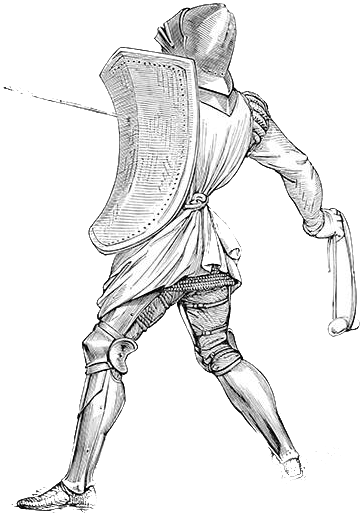
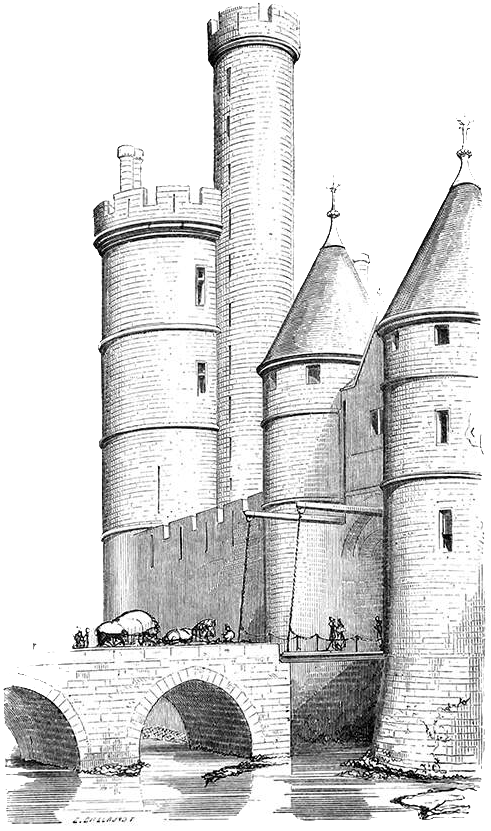
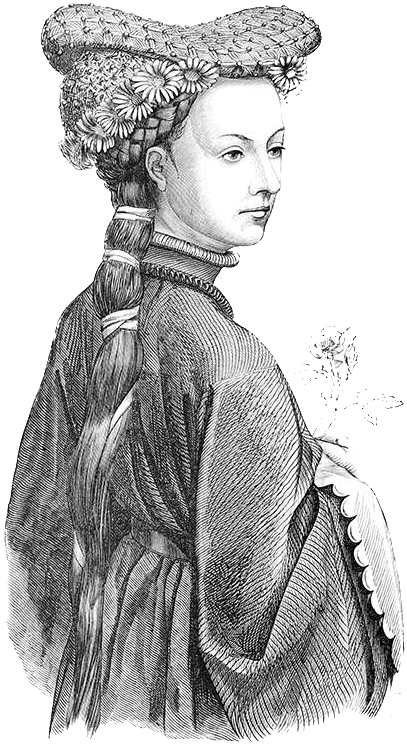
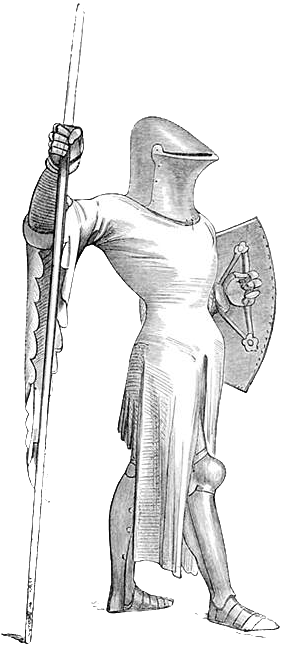
Illustrations by Viollet-le-Duc, Eugène Emmanuel
3 notes
·
View notes
Text
Reliquary
About 1851
Eugène Emmanuel Viollet-le-Duc (French, 1814-1879)
Made by Louis Bachelet (French, active 1851-about 1880)
Paris
Gilt bronze over wooden support
Restricted gift of Mary Kathryn Harrigan
and the Thomas W. Dower
Foundation, 2016.118
In the early 1800s, in the wake of the destruction caused by the French Revolution caused by
the France set about repairing their buildings and restoring their treasuries. Eugène
Viollet-de-Duc, France’s foremost 19th-century architect and the restorer of the cathedral of
Notre Dame de Paris, designed this reliquary as a prototype; therefore it never contained relics
or was dedicated to a specific saint. This is one of the few surviving relatives by Viollet-le-Duc,
and its architectural design and decorative vocabulary (including pinecones as symbols of
eternity) reveal his thorough grounding in medieval art. A relevant example from the Art
Institute’s collection is illustrated at right.
Model Chalice
About 1849
Designed by Augustus Welby
Northmore Pugin
(English, 1812-1852)
Made by John Hardman and Company
(English, 1838-2008)
Birmingham, England
Gilt base metal, enamels, and semiprecious stones
Bessie Bennett Endowment, 1981.640
These two chalice span the length of the career of A. W. N. Pugin, the foremost proponent of
the Gothic Revival style in the 19th-century England. He designed the chalice on the right,
which reflects the eclecticism and inventiveness of the early Gothic Revival style, when he was
just 15 years old.
0 notes
Text
Olivier Messiaen, il musicista che amava gli uccelli
Un uomo che amava la natura e il piacere della musica….
Olivier-Eugène-Prosper-Charles Messiaen nacque ad Avignone il 10 dicembre 1908 dalla poetessa Cécile Sauvage e da Pierre, studioso e insegnante di letteratura inglese.
Allo scoppio della prima guerra mondiale Pierre venne arruolato e la famiglia si trasferì a Grenoble, presso il fratello di Cécile, dove Olivier svolse le prime esperienze musicali e, dopo i primi approcci da autodidatta, iniziò a prendere lezioni di pianoforte e a dedicarsi alla composizione.
Nel 1918, al ritorno di Pierre, i Messiaen si trasferirono a Nantes e, dal 1919, a Parigi, dove Olivier fu ammesso al Conservatorio: fu allievo di Jean Gallon per l’armonia, Maurice Emmanuel per storia della musica, Marcel Dupré per organo e improvvisazione, poi nel 1926 iniziò gli studi di composizione con Charles-Marie Widor per proseguirli poi dal 1927 con Paul Dukas, sotto la cui guida conseguì il Premier prix nel 1930.
Durante gli studi Messiaen pubblicò i primi lavori e fu organista presso l’Église de la Sainte-Trinité in sostituzione del titolare Charles Quef e alla morte di questi, nel 1931, rilevò l’incarico.
Nel 1932 sposò la violinista e compositrice Louise Justine Delbos, soprannominata Claire, dalla quale nel 1937 ebbe un figlio, Pascal.
Colpita da un tumore cerebrale, nel 1947 Claire fu sottoposta a un intervento che, pur riuscendo nell’asportazione, avrebbe causato la perdita della memoria della donna, che avrebbe trascorso il resto della vita in un istituto.
Nel 1936 Messiaen iniziò ad insegnare presso la Schola cantorum parigina mentre, insieme a André Jolivet, Jean-Yves Daniel-Lesur e Yves Baudrier fondò il gruppo La jeune France, che, in polemica con Jean Cocteau e il gruppo dei Sei, propugnava un rinnovamento dei linguaggi musicali.
In quel periodo il compositore cominciò a rivolgere la propria attenzione alle potenzialità espressive offerte dalle onde Martenot.
Chiamato alle armi al principio della seconda Guerra mondiale, Olivier nel maggio 1940 fu catturato dalle forze naziste preso Verdun e imprigionato a Görlitz nel campo di concentramento VIII-A e venne liberato nel maggio 1941.
Rientrato in patria, ottenne la cattedra di armonia presso il Conservatorio parigino, poi ampliò progressivamente la propria attività nel campo dell’insegnamento attraverso lo svolgimento di corsi privati di analisi musicale e l’esposizione dei principî alla base del proprio linguaggio nel trattato Technique de mon langage musical del 1944.
Presso il Conservatorio passò alle cattedre di filosofia della musica nel 1955, analisi musicale nel 1947 e composizione nel 1962 ed ebbe tra i suoi allievi Pierre Boulez, Karlheinz Stockhausen, Karel Goeyvaerts, Iannis Xenakis, Gerard Grisey, Alexander Goehr, Tristan Murail, Kent Nagano, George Benjamin e Yvonne Loriod, con cui stabilì un intenso sodalizio artistico.
Invitato a tenere corsi di perfezionamento nei centri di primo piano dell’avanguardia musicale, il compositore fu docente a Budapest nel 1947, a Tanglewood nel 1949, a Darmstadt nel 1949 e nel 1950.
Dopo che rimase vedovo nel 1959, nel 1961 Messiaen sposò in seconde nozze Yvonne Loriod e nel 1978 lasciò l’insegnamento presso il Conservatorio, ma continuò a dedicarsi alla composizione musicale e allo studio degli uccelli, che fu la sua seconda grande passione.
Il grande musicista morì il 27 aprile 1992 presso l’ospedale Beaujon di Clichy e nel 2014, nel sito del campo di concentramento VIII-A, venne inaugurato il Centro europeo di istruzione e cultura Meetingpoint Music Messiaen.
Read the full article
0 notes
Text
Mwen Deklare | Wendy Nazaire
Mwen Deklare Mwen pap echwe
Avèk Bondye Mwen paka wont
Gras Ak Pouvwa l Map reyisi
Si Bondye pou Mwen Kilès ki ka kont Mwen?
Refrain
Mwen Deklare Chèn Mwen yo kase
Alelouya M Pral Temwanye
Pa san Jezi Mwen Pa Esklav Satan Ankò
Mwen Deklare Mwen Libere
II
Souf sentespri k ap opere
Li ap lage Yon Rekolt Gras
Agi lafwa w Sezi pa w la
Ke kondanasyon Al tonbe lwen lavi w
Alelouya, Alelouya
Alelouya, Alelouya......
Que Dirons-nous donc à l'égard de ses choses, Si Dieu est pour nous qui sera contre nous?
MPa konnen kisa Ènmi an te Deklare sou lavi w
MPa konnen kisa Ènmi an te pran pou ou
Mwen Deklare "dans le nom précieux de Jésus", Ou libere (Alelouya)
Ou gen viktwa, ou libere
Nan Plas kotew ye a, leve men ou kriye,
Alelouya, Alelouya, Alelouya
-------------------------------------------------------------------------------------
Auteur/ Compositeur: Wendy NAZAIRE
Choeurs: Le groupe MAR HAÏTI
-Remose Ulysse (Mounie)
-Anne Gaëlle Ulysse
-Roodeleine Frantz Brumaire
Lead Vocal: Wendy NAZAIRE
Arrangement: Maestro Paul Eugène Mathieu / Maestro Yvon Clerger
Keyboard/ Harmonisation : Maestro Paul Eugène Mathieu
Studio d'enregistrement: Zyvon Music
Guitare: Polché Cédieu
Bass: Maestro Yvon Clerger
Batterie: Cleyford Emmanuel Jean-Charles
Production: Clear Studio
Directed By: Abed Derisma
👉 Lien vers : YouTube
👉 Lien vers : Facebook
0 notes
Text
0 notes
Text
With two days left to submit nominees, here is where the list stands:
France:
Jean Lannes
Josephine de Beauharnais
Thérésa Tallien
Jean-Andoche Junot
Joseph Fouché
Charles Maurice de Talleyrand
Joachim Murat
Michel Ney
Jean-Baptiste Bernadotte (Charles XIV of Sweden)
Louis-Francois Lejeune
Pierre Jacques Étienne Cambrinne
Napoleon I
Marshal Louis-Gabriel Suchet
Jacques de Trobriand
Jean de dieu soult.
François-Étienne-Christophe Kellermann
Louis Davout
Pauline Bonaparte, Duchess of Guastalla
Eugène de Beauharnais
Jean-Baptiste Bessières
Antoine-Jean Gros
Jérôme Bonaparte
Andrea Masséna
Antoine Charles Louis de Lasalle
Germaine de Staël
Thomas-Alexandre Dumas
René de Traviere (The Purple Mask)
Claude Victor Perrin
Laurent de Gouvion Saint-Cyr
François Joseph Lefebvre
Major Andre Cotard (Hornblower Series)
Edouard Mortier
Hippolyte Charles
Nicolas Charles Oudinot
Emmanuel de Grouchy
Pierre-Charles Villeneuve
Géraud Duroc
Georges Pontmercy (Les Mis)
Auguste Frédéric Louis Viesse de Marmont
Juliette Récamier
Bon-Adrien Jeannot de Moncey
Louis-Alexandre Berthier
Étienne Jacques-Joseph-Alexandre Macdonald
Jean-Mathieu-Philibert Sérurier
Catherine Dominique de Pérignon
England:
Richard Sharpe (The Sharpe Series)
Tom Pullings (Master and Commander)
Arthur Wellesley, 1st Duke of Wellington
Jonathan Strange (Jonathan Strange & Mr. Norrell)
Captain Jack Aubrey (Aubrey/Maturin books)
Horatio Hornblower (the Hornblower Books)
William Laurence (The Temeraire Series)
Henry Paget, 1st Marquess of Anglesey
Beau Brummell
Emma, Lady Hamilton
Benjamin Bathurst
Horatio Nelson
Admiral Edward Pellew
Sir Philip Bowes Vere Broke
Sidney Smith
Percy Smythe, 6th Viscount Strangford
George IV
Capt. Anthony Trumbull (The Pride and the Passion)
Barbara Childe (An Infamous Army)
Doctor Maturin (Aubrey/Maturin books)
Scotland:
Thomas Cochrane
Colquhoun Grant
Austria:
Klemens von Metternich
Friedrich Bianchi, Duke of Casalanza
Franz I/II
Archduke Karl
Marie Louise
Franz Grillparzer
Wilhelmine von Biron
Poland:
Wincenty Krasiński
Józef Antoni Poniatowski
Józef Zajączek
Maria Walewska
Władysław Franciszek Jabłonowski
Adam Jerzy Czartoryski
Antoni Amilkar Kosiński
Zofia Czartoryska-Zamoyska
Stanislaw Kurcyusz
Russia:
Alexander I Pavlovich
Alexander Andreevich Durov
Prince Andrei (War and Peace)
Pyotr Bagration
Mikhail Miloradovich
Levin August von Bennigsen
Pavel Stroganov
Empress Elizabeth Alexeievna
Karl Wilhelm von Toll
Dmitri Kuruta
Alexander Alexeevich Tuchkov
Barclay de Tolly
Fyodor Grigorevich Gogel
Ekaterina Pavlovna Bagration
Prussia:
Louise von Mecklenburg-Strelitz
Gebard von Blücher
Carl von Clausewitz
Frederick William III
Gerhard von Scharnhorst
Louis Ferdinand of Prussia
Friederike of Mecklenburg-Strelitz
Alexander von Humboldt
Dorothea von Biron
The Netherlands:
Ida St Elme
Wiliam, Prince of Orange
The Papal States:
Pius VII
Portugal:
João Severiano Maciel da Costa
Spain:
Juan Martín Díez
José de Palafox
Inês Bilbatua (Goya's Ghosts)
Haiti:
Alexandre Pétion
Sardinia:
Vittorio Emanuele I
Denmark:
Frederik VI
Sweden:
Gustav IV Adolph
11 notes
·
View notes
Text
Derelict void vault doors

Derelict void vault doors how to#
Derelict void vault doors series#
The Panthéon is the quintessential Neoclassical monument in Paris and an outstanding example of Enlightenment architecture. A Napoleonic decree of 1808 granted the residence to the state. At the time of the French Revolution, the building was given to the National Archives. Plaster rocailles (shellwork) and a decorative band of medallions and shields complete the sweetly disordered effect. Above the panels are shallow arches containing cherubs and eight paintings by Charles Natoire depicting the history of Psyche. The princess’s salon is painted white with delicate gilded moldings and features arched niches containing mirrors, windows, and panels. In the prince’s salon, the wood paneling is painted a pale green and surmounted by plaster reliefs. The interiors are considered among the finest Rococo decorative interiors in France. In 1708 Delamair was replaced by Germain Boffrand (1667–1754), who carried out all the interior decoration for the apartments for the prince’s son, Hercule-Mériadec de Rohan-Soubise, on the ground floor and for the princess on the piano nobile (principal floor), both of which featured oval salons looking into the garden.
Derelict void vault doors series#
On the far side of the courtyard is a facade with twin colonnades topped by a series of statues by Robert Le Lorrain representing the four seasons. Delamair designed the huge courtyard on the Rue des Francs-Bourgeois. In 1700 François de Rohan bought the Hôtel de Clisson, and in 1704 the architect Pierre-Alexis Delamair (1675–1745) was hired to renovate and remodel the building. The Hôtel de Soubise is a city mansion built for the prince and princess de Soubise. The stained glass is supported by delicate radiating webs of carved stone tracery. The circular rose window in the west front and two more in the north and south transept crossings, created between 12, are masterpieces of Gothic engineering. Anne, with richly carved sculptures around the ornate doorways. It comprises the Gallery of Kings, a horizontal row of stone sculptures a rose window glorifying the Virgin, who also appears in statue form below the Gallery of Chimeras two unfinished square towers and three portals, those of the Virgin, the Last Judgment, and St. The western facade is the distinguishing feature of the cathedral. The spire was erected in the 1800s during a renovation by Eugène-Emmanuel Viollet-le-Duc, though it was destroyed by fire in 2019. Maurice de Sully, the bishop of Paris, began construction in 1163 during the reign of King Louis VII, and building continued until 1330. The cathedral stands on the Île de la Cité, an island in the middle of the River Seine, on a site previously occupied by Paris’s first Christian church, the Basilica of Saint-Étienne, as well as an earlier Gallo-Roman temple to Jupiter, and the original Notre-Dame, built by Childebert I, the king of the Franks, in 528. In particular, via a framework of flying buttresses, external arched struts receive the lateral thrust of high vaults and provide sufficient strength and rigidity to allow the use of relatively slender supports in the main arcade. It is a Gothic exemplar of a radical change in the Romanesque tradition of construction, both in terms of naturalistic decoration and revolutionary engineering techniques. Notre-Dame de Paris has been the cathedral of the city of Paris since the Middle Ages.
SpaceNext50 Britannica presents SpaceNext50, From the race to the Moon to space stewardship, we explore a wide range of subjects that feed our curiosity about space!.
Learn about the major environmental problems facing our planet and what can be done about them!
Saving Earth Britannica Presents Earth’s To-Do List for the 21st Century.
Britannica Beyond We’ve created a new place where questions are at the center of learning.
100 Women Britannica celebrates the centennial of the Nineteenth Amendment, highlighting suffragists and history-making politicians.
Derelict void vault doors how to#
COVID-19 Portal While this global health crisis continues to evolve, it can be useful to look to past pandemics to better understand how to respond today.Student Portal Britannica is the ultimate student resource for key school subjects like history, government, literature, and more.From tech to household and wellness products. Britannica Explains In these videos, Britannica explains a variety of topics and answers frequently asked questions.This Time in History In these videos, find out what happened this month (or any month!) in history.#WTFact Videos In #WTFact Britannica shares some of the most bizarre facts we can find.Demystified Videos In Demystified, Britannica has all the answers to your burning questions.Britannica Classics Check out these retro videos from Encyclopedia Britannica’s archives.

0 notes